
Lavender Bergamot Deodorant Recipe with French Green Clay
Whether you prefer a stick or a cream deodorant, this versatile lavender bergamot deodorant recipe with French green clay offers some of the best wetness and odor protection yet! And it’s completely 100% natural.
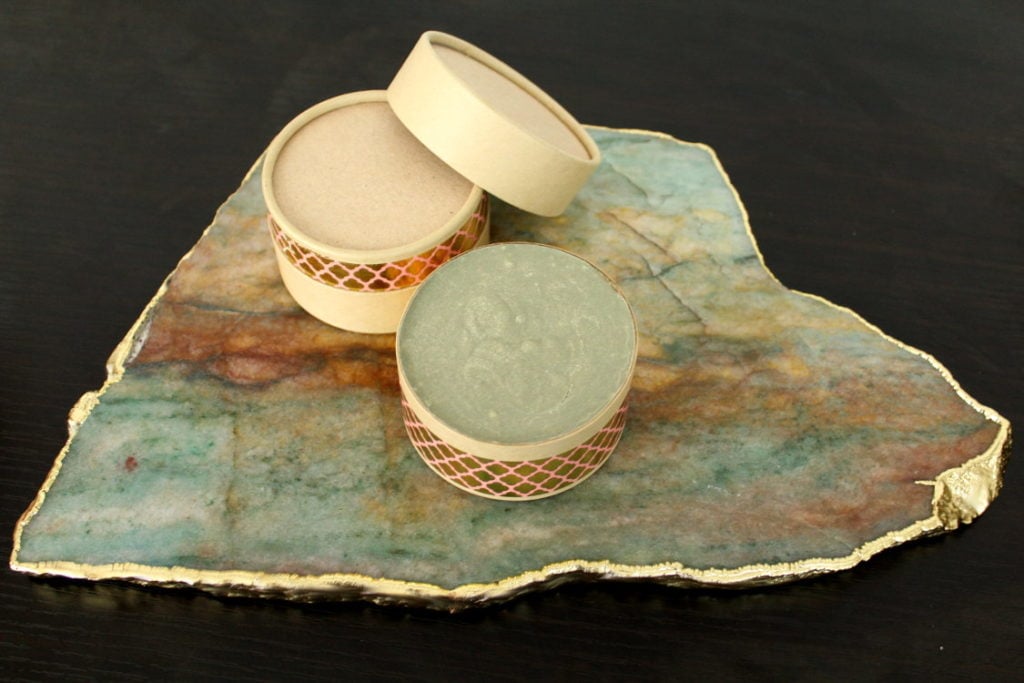
I’ve accumulated quite the stash of lifestyle and beauty tips over the past several decades. Like retinol will clear up your hormonal acne at any age and flossing can not only prevent a receding gum line, but also stop it in its tracks. But I’ve also learned that antiperspirant will, over time, make you both sweat and stink more.
Why Switch to Natural Deodorant?
Our bodies evolved to sweat. It’s what sets us apart from other mammals. Sweating keeps our bodies from overheating. As a result, we are able to work harder and longer. Antiperspirants run counteractive to this. Aluminum-based ingredients block our sweat glands to prevent this very necessary and vital function. In turn it traps odor causing bacteria from exiting our bodies – odor that the antiperspirant then masks. This can lead to some pretty negative side effects and cause worsening odor over time. (Which is why you now need a clinical strength antiperspirant but didn’t when you were younger.)
When you then also compound this with the other potentially harmful ingredients found in some brands of antiperspirants. These ingredients include triclosan which can disrupt hormones and environmental estrogen like BHT and parabens. And over time it’s possible that these ingredients can lead to health problems.
While there’s no definitive research that can state absolutely that these ingredients – which are used well outside of moderation – do cause health problems as components of antiperspirants, there’s also no research that proves it doesn’t. And as time passes and we learn more about how the products we use can affect our bodies, it may be time to err on the side of caution.
Having personally made the switch from an antiperspirant to using my own homemade deodorant recipe over a year ago, I can say I will never go back. Not only do I stink less now than I did when I used antiperspirants, I also sweat less. And as someone who suffers from fibromyalgia, I also FEEL better the majority of the time.
However, because I am who I am, whenever I run out of my current batch of deodorant I come up with an entirely new recipe. Because, hey. Why not? Life’s short. Mix it up. Yada yada yada. Doesn’t matter. What this means for you, is every few months I throw out a new natural deodorant recipe for you to try. So there you go.
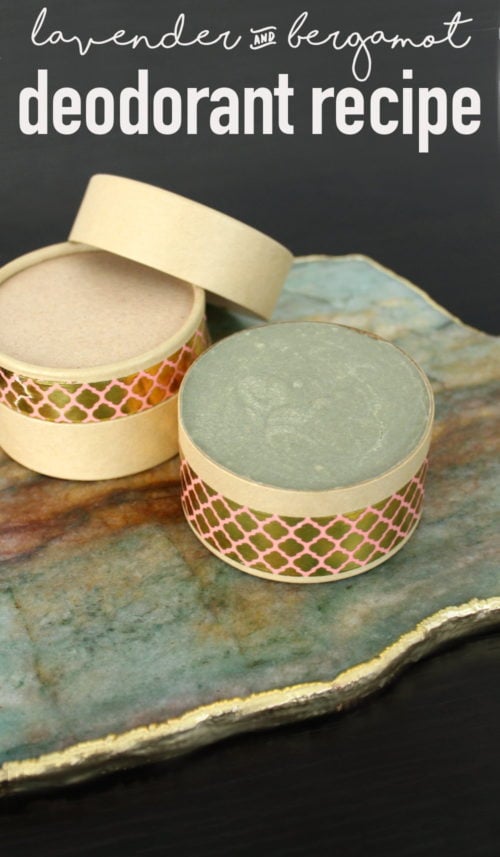
DIY Lavender Bergamot Deodorant
My latest and greatest is a lavender bergamot deodorant recipe. It contains my staple ingredients like arrowroot powder and magnesium hydroxide, but omits coconut oil which has a tendency to clog pores due to its high non-comedogenic rating.
As a twist, I also included French green clay in my lavender bergamot deodorant recipe. And instead of my usual candelilla or carnauba wax, I used beeswax instead. The bonus? This recipe works as a cream deodorant in a jar or as a stick deodorant in a tube.
French Green Clay Skin Benefits
French green clay, sometimes also called sea clay, is made up of micro molecules that are able to “drink” oils, impurities and even toxic substances from your skin. (Kind of like activated charcoal but without the mess.) Commonly used to fight and prevent acne in addition to routine weekly face masks, this light green clay is naturally rich in minerals and is valued for its toning properties.
Even more interesting is that French green clay obtains its light green color from naturally occurring iron oxide and decomposed plant material – the same life cycle that the earth uses to regenerate herself. In turn, its soft texture and elemental composition lends itself well to a variety of skin care preparations.
While it’s a common misconception that all French green clay comes from France (it does not) I specifically used the French green clay sold by Mountain Rose Herbs. Their untreated French green clay is specifically quarry mined from naturally occurring deposits in France and makes a lovely addition to this natural deodorant recipe.
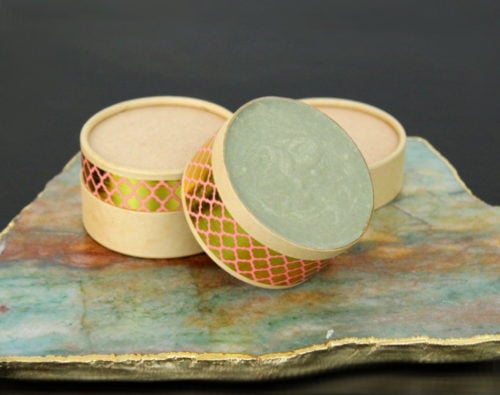
Lavender Bergamot Deodorant Recipe
Ingredients Used to Make Natural Deodorant:
6 oz. arrowroot powder
3 oz. magnesium hydroxide
1 oz. French green clay
2 oz. cocoa butter
2 oz. baobab oil
.5 oz. 100% neem oil
.5 oz. refined shea butter
1/2 teaspoon beeswax pastilles
.1 oz. lavender essential oil
.05 oz. bergamot essential oil
How to Make Deodorant with Lavender and Bergamot
You’ll need a digital scale to weigh all of the ingredients for my lavender bergamot deodorant recipe, except for the beeswax pastilles. You will need a teaspoon measuring spoon to measure out the wax.
To make my lavender bergamot deodorant recipe with French green clay, begin by weighing out the cocoa butter and shea butter into a large glass Pyrex measuring cup or glass bowl. (It’s important to note that refined shea butter has a higher melting point than unrefined shea butter. Therefore substitutions may cause variations in the recipe.)
Next, measure out a level teaspoon of the beeswax pastilles and add it to your container. Melt these ingredients either in a microwave at 30% power or a double boiler until melted.
Once melted, weigh out the baobab oil and neem oil. Stir these oils into the melted butters and wax. (If needed, you can gently heat the deodorant mixture again then mix well to combine.)
While the lavender bergamot deodorant mixture is still hot, weigh out and stir in the arrowroot powder, French green clay and magnesium hydroxide. Mix well to combine.
Then follow with the essential oils, weighing out the amounts first, then stir them into the deodorant mixture until thoroughly incorporated.
Finally, pour your lavender bergamot deodorant into your desired containers of choice. I used 4 oz. paperboard containers for mine.
These eco-friendly paperboard jars are renewable, recyclable, compostable, and biodegradable. They also have an oil resistant paper barrier so they work well with products such as lip balms, salves, deodorants and even body butters. You can purchase these eco-friendly jars in bulk from SKS Bottle & Packaging here. Another alternative is to pour these into empty deodorant tubes.
Allow your deodorant to cool and solidify, then cap and label as desired for personal use or gifting.
If you’d like to recreate my lavender bergamot deodorant recipe to sell, then you’ll need to follow good manufacturing practices (GMP) when making your product. You’ll find that the book, Good Manufacturing Practices for Soap and Cosmetic Handcrafters by Marie Gale, is a valuable resource if you’re just getting started making your own homemade soaps, skin care products and cosmetics.
In addition to GMP, you’ll also need to follow FDA guidelines for labeling your products. If you’re unsure about the rules and regulations regarding labeling cosmetics, the book, Soap and Cosmetic Labeling: How to Follow the Rules and Regs Explained in Plain English by Marie Gale, spells out everything you need to know to legally label your handcrafted products.
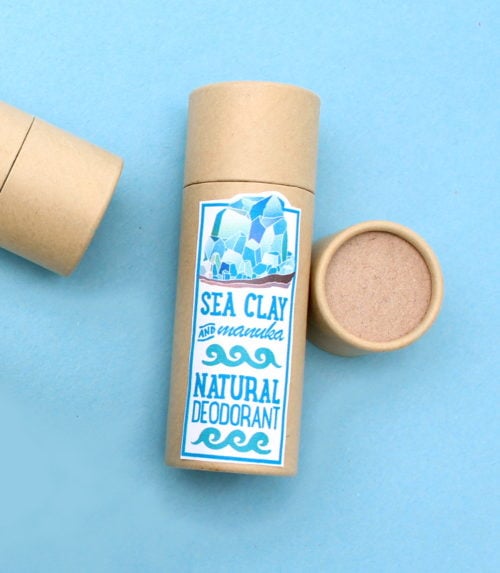
Natural Deodorant Recipes
If you enjoyed my lavender bergamot deodorant recipe, then you may also enjoy my other natural deodorant recipes as well.
- Natural Lavender Patchouli Deodorant Recipe
- Manuka Oil Deodorant Recipe with Detoxifying Sea Clay
- Palmarosa Lime Deodorant Recipe with Aloe Vera Oil
- Lavender Cream Deodorant Recipe with Bentonite Clay
- Natural Neem Oil Deodorant Recipe
- Natural Creamy Magnesium Deodorant Recipe
For even more great bath, body and skin care recipes be sure to check out my boards on Pinterest. You can also follow me via your favorite social media platforms including G+, Tumblr, Facebook, Twitter, Blog Lovin’, and Instagram. Or subscribe to Soap Deli News via email for future updates, DIY projects and recipes.
This article is not intended to provide diagnosis, treatment or medical advice and is provided for informational purposes only. Information on products mentioned are based on my own personal experience and have not been evaluated by the FDA. Please consult a physician prior to making any changes that may impact your health.


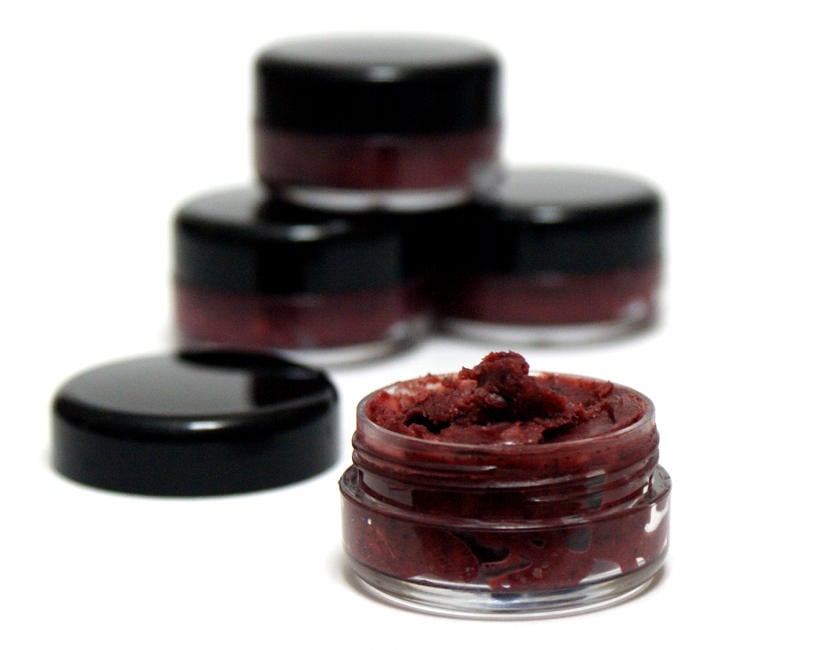

16 Comments
Anna
November 29, 2017 at 11:44 pm
This is an awesome recipe without bicarb, about the magnesium I don’t have the hydroxide one could I switch it with chloride? Thank you Rebecca for sharing
Rebecca D. Dillon
November 30, 2017 at 11:24 am
Glad you like it! Magnesium chloride is a salt and I have no idea how that would perform in this recipe. I’ve tried salt in deodorants before and they seem to recrystallize. So I’m not at all sure it’s a good swap for the magnesium hydroxide. You should be able to find bulk magnesium hydroxide however locally at a health food store.
Kenda
December 12, 2017 at 11:53 pm
I just made my first batch and they are cooking. Does the been oil smell dissipate? It’s quite strong !
Rebecca D. Dillon
December 13, 2017 at 12:55 pm
Yes, it does! The neem oil is pretty gnarly and is especially bad when being heated. But the eo’s cover it nicely.
Sanna
December 29, 2017 at 5:08 pm
Hello!
I’m interested in trying out your deodorant recipes, but I was wondering if it’s important that the magnesium is specifically hydroxide? Would magnesium oxide do?
Rebecca D. Dillon
December 30, 2017 at 1:12 pm
Magnesium hydroxide is a water soluble powder that dissolves completely in this deodorant. I’m not familiar with working with magnesium oxide, which is a crystal, so I can’t offer any insight into using it as a substitution.
Annette Miller
May 12, 2018 at 12:31 pm
Which one woulds work well as an antiperspirant also?
Rebecca D. Dillon
May 13, 2018 at 10:28 am
None of these are antiperspirants. They are only deodorants. You’d have to add aluminum based ingredients for an antiperspirant which is what you don’t want.
Jennifer
June 3, 2018 at 12:28 pm
Hi! I recently made the switch to natural deodorant and I’m interested in making my own deodorants with your recipe in the future.
1) Can I replace the shea butter with mango butter?
2) Can I replace the baobab oil & neem oil with other oils such as jojoba oil, hemp seed oil or meadowform oil?
Thank you.
Rebecca D. Dillon
June 4, 2018 at 8:43 am
I found mango butter a bit more crumbly than shea for this type of product so it’s not always a smooth application. But you’re welcome to give it a try. You can swap out carrier oils as desired. I’d recommend the drier oils like jojoba and hemp. However, I REALLY recommend neem oil because it’s so good at tackling odor causing bacteria. I preferred my later recipes with neem oil over the ones that didn’t contain it. Hope this helps.
Jennifer
June 5, 2018 at 3:40 pm
Thank you, Rebecca, for your reply.
So I have been searching for magnesium hydroxide in my country (Malaysia) but it seems that only chemical companies sell magnesium hydroxide in non-liquid form. Can I use that? Or it must be food grade? Or can I substitute the magnesium hydroxide content with more arrowroot powder or a different clay?
On carrier oils, do drier oils mean those that absorbs into the skin quickly? Is camellia oil considered as a drier oil?
Thank you.
Rebecca D. Dillon
June 5, 2018 at 3:46 pm
Magnesium hydroxide should be a dry powder. You can ask the companies who sell it in your country if it is cosmetic grade or safe for skin use. I don’t see why it wouldn’t be. You can try the recipe with more arrowroot, but honestly the magnesium hydroxide is replacing baking soda. I don’t think just arrowroot powder and clay would be as effective. However I haven’t tried it. You can also try adding shelf stable probiotics in a smaller amount. And yes, a dry carrier oil is one like hemp, rosehip or fractionated coconut oil. Camellia oil is a lightweight, dry oil and would be a suitable substitute. Hope that helps.
Jennifer
June 6, 2018 at 4:04 am
Hi Rebecca, thank you very much for your advices.
If I want to add probiotics, how do I know how much to add? I plan to make 1 2oz tube to try.
I was comparing this deodorant recipe with the one with probiotics. Why is the ratio of magnesium hydroxide & arrowroot powder different between the 2 recipes? What should we consider when tweaking the recipe?
Thank you very much. I’m really excited to try making my own deodorant now. 🙂
Rebecca D. Dillon
June 6, 2018 at 9:32 am
The ratios are different simply because I play around with formulating new recipes. Higher magnesium hydroxide works better. I used three capsules of probiotics in this recipe. So you can use it as a guide. Good luck with your deodorant! I’m so happy you’re going to make the switch!
irene
August 20, 2018 at 1:20 pm
Hi Rebecca,
I made your deodorant and half the measurements. However the deodorant isn’t solidifying. I didn’t have any baobab oil (difficult to find in Malaysia) so I replaced with coconut oil although I could have used jojoba. I also notice that theres a film of oil floating above the deodorant tube. I’m not sure what to do right now? I can’t cover it as it’s not harden and I can’t put in the fridge I can’t cover it.
Rebecca D. Dillon
August 20, 2018 at 2:21 pm
I’ve found that those in warmer climates and differences in materials can cause this to not fully solidify. I did use high melt shea butter for this recipe which has a higher melting point. And I’ve read that the melting point of shea butter can vary widely. Using raw shea butter (or making substitutions) can require a slight change to the recipe as can substitutions as the weights of different ingredients vary. However it’s an easy fix. Assuming you weighed everything correctly, simply reheat and add an additional one to two teaspoons of arrowroot powder. Remix, then repour when it starts to thicken.
Comments are closed.